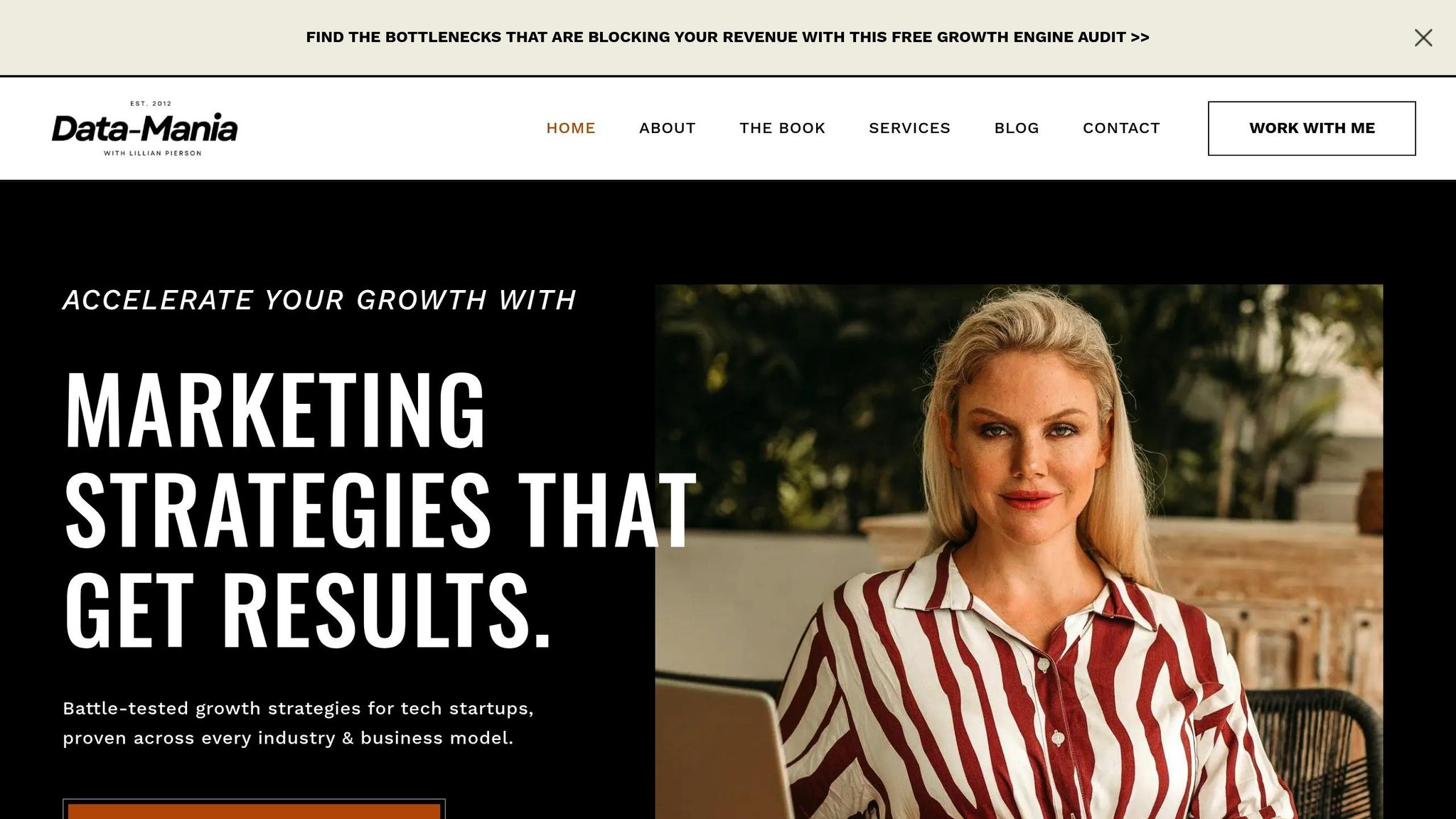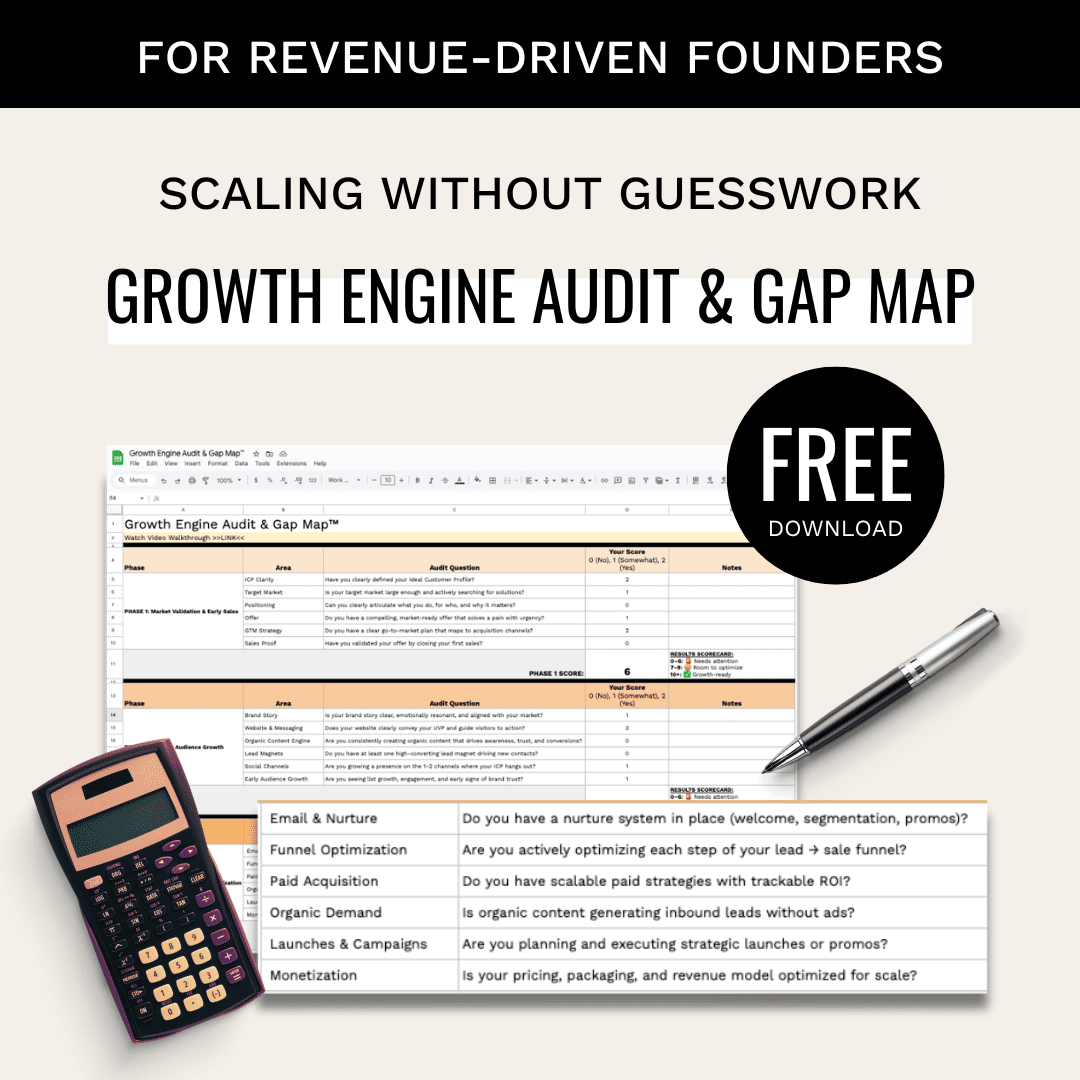AI-powered search is changing how people find information. Instead of traditional search engines, users now rely on "answer engines" like ChatGPT, which deliver direct, conversational answers. By 2025, 60% of AI searches ended without clicks, and 83% of users found AI search more efficient. For businesses, this shift means fewer clicks but higher-quality traffic from optimized AI search ranking on LLM platforms.
To succeed, focus on these 7 steps:
- Build Authority and Trust: Use expert credentials, original research, and accurate data to make your content credible to AI systems.
- Structure Content for AI: Use schema markup, clear headings, and concise formatting to help AI understand and cite your content.
- Match User Intent: Target natural language queries and long-form questions to align with AI’s conversational understanding.
- Leverage Advanced Techniques: Create comparison articles, listicles, and content tailored for AI-sourced platforms.
- Track AI Visibility: Use specialized tools to monitor citations, sentiment, and AI-driven traffic.
- Focus on GEO (Generative Engine Optimization): Optimize content specifically for AI systems instead of traditional SEO.
- Stay Updated: Regularly update content to meet evolving AI algorithms and maintain relevance.
AI search is reshaping online visibility. Businesses that prioritize authority, structure, and AI-specific strategies will stay ahead in this fast-changing landscape.
AI Search Optimization: 7 Must-Do Moves for 2026
Step 1: Build Content Authority and Trust
AI-driven search engines now rely on the E-E-A-T framework (Experience, Expertise, Authority, Trust) to evaluate content. Unlike old-school search engines that focused heavily on keywords and backlinks, AI systems prioritize content that is genuinely helpful, reliable, and created with the intent to benefit users. This shift means that building trust and authority is critical if you want AI systems to cite your content.
"Of these aspects, trust is most important. The others contribute to trust, but content doesn’t necessarily have to demonstrate all of them." – Google Search Central [2]
Here’s an eye-opening stat: 57% of Search Engine Results Pages now feature AI-generated overviews, and these typically include around eight links [3]. Even more telling, 52% of the sources cited in these overviews already rank in the top 10 traditional search results [4]. This shows that AI systems value not just high-ranking pages but also those they view as authoritative and trustworthy.
To thrive in this environment, it’s not enough to produce quality content. You need to demonstrate your credibility in ways that AI systems can recognize and trust.
"The more trustworthy your content appears, the more likely AI is to select it when generating answers, and so it becomes more likely to drive visibility, traffic, and ultimately, conversions for your brand." – Rebekah Prime, Copywriter @ Dealfront [1]
Create Content with Expert Credentials
AI systems are skilled at identifying genuine expertise. They evaluate author credentials, publication history, and the depth of knowledge in the content. To stand out, your content must clearly establish who created it and why they’re qualified to address the topic.
- Highlight Author Expertise: Include detailed author bios that showcase qualifications, certifications, and relevant accomplishments. AI systems look for these signals when deciding whether to cite your content. Be specific – mention years of experience, notable projects, and any industry recognition.
- Demonstrate First-Hand Experience: Authenticity matters. Share real-world results, challenges you’ve faced, or unique insights from your direct experience. AI systems can often detect when content is written by someone with hands-on knowledge versus someone summarizing other sources.
- Show Your Work: Transparency builds trust. Explain your methodology, reasoning, and the context behind your conclusions. Briefly outlining your process helps AI systems understand your content’s credibility and increases the chances of it being cited.
The takeaway? When it comes to AI visibility, you have to move beyond surface-level expertise and back up your claims with clear, demonstrable knowledge. AI systems are adept at distinguishing between genuine understanding and content that simply regurgitates existing information.
Use Data to Build Authority
Data is a cornerstone of trust for AI systems. With 84% of US users citing concerns about AI hallucinations [5], these systems are increasingly cautious about citing only verifiable and well-documented information. This creates a big opportunity for businesses that can provide original data and thorough research.
How you present your data can directly impact how AI systems cite and rank your content.
- Prioritize Original Research: Publishing your own research, surveys, or industry studies positions you as a primary source. AI systems reward content that serves as an original reference point rather than just commenting on existing data. Consider gathering proprietary data or conducting unique studies to establish yourself as an authority.
- Back Every Claim with Sources: AI systems scrutinize content for factual accuracy more rigorously than traditional algorithms. Support your claims with reputable sources, such as government reports, academic studies, or trusted industry publications. This not only reinforces trust but also addresses concerns about misinformation in AI-generated responses.
- Create Quotable Data Statements: Make your data easy for AI systems to use. Present statistics as clear, standalone statements that include the specific figure, timeframe, and source. This makes your content more likely to be cited.
- Update Content Regularly: Freshness matters. Research shows that 53% of content cited in ChatGPT had been updated within the last six months [6]. Regularly update your content with new statistics, case studies, and developments. Including a "last updated" date can also signal freshness to AI crawlers.
The goal isn’t just to gather data but to present it in a way that AI systems can easily verify and reference. By doing this, you’ll position your content as both credible and indispensable in the AI-driven search landscape – thus earning you unmatched AI visibility.
Step 2: Structure Content for AI Systems
After establishing content authority, the next step is to structure your content in a way that AI systems can easily interpret. Unlike humans, AI systems require clear and specific signals to process and understand the information on a page. The way you organize and format your content can significantly influence how effectively AI systems analyze, understand, and even cite it.
"Structured data helps our systems better understand what’s on a page, which can help with showing your content in rich results and other special search result features." – John Mueller, Google [9]
AI-powered search engines like Google’s AI Overviews, Bing’s Copilot, and Perplexity are moving beyond basic keyword matching. They rely on entity-driven indexing, mapping web pages to specific concepts and entities. To keep up with this shift, your content must "speak their language" through proper structure and the use of schema markup. In fact, over 72% of websites that rank on the first page of Google search results use schema markup [9].
Let’s dive into how you can implement schema markup to make your content more accessible to AI systems.
Use Schema Markup and Structured Data
Schema markup converts your content into machine-readable signals, making it easier for AI systems to identify entities and understand context. Structured data plays a key role in ensuring AI can interpret your content accurately according to SE Ranking.
"Although search engines use sophisticated machine learning algorithms, machines do not process or interpret information in the same way as humans. What might seem simple to a person may be unintelligible to a computer. Schema Markup helps fill in the blanks for search engines so that they know exactly what your page is about." – Martha van Berkel, CEO, Schema App [7]
For example, schema markup ensures that AI systems can distinguish whether "Apple" refers to the fruit or the tech company. This clarity is essential for generative AI systems and Large Language Models to interpret your content accurately.
Why JSON-LD Is the Best Choice
Google recommends JSON-LD for implementing schema markup because it’s simple to use and maintain. Unlike inline HTML markup, JSON-LD keeps structured data separate from your visible content, which reduces the risk of errors. It can also be dynamically added without affecting how your page appears to users. This ensures that even if AI crawlers don’t execute JavaScript, they can still access the structured data [9].
Pick the Right Schema Types and Track Results
Accuracy is key when choosing schema types. Always select the most precise schema that matches your content. For example, if you’re sharing cooking instructions, use the "Recipe" schema instead of a generic "Article" schema. Common types of schema for AI search include Article/BlogPosting, FAQ/Q&A, Product, LocalBusiness, Person, Organization, Event, and Creative Works.
To ensure your structured data is working as intended, validate it using tools like Google’s Rich Results Test and monitor its performance through Google Search Console. Keep your schema data up-to-date by syncing details like dates, prices, availability, and reviews with your visible content to maintain trust with AI systems.
Format Content for Easy Scanning
In addition to schema markup, the visible structure of your content plays a crucial role in helping AI extract key information.
Use Logical Heading Hierarchies
Organize your content using clear heading levels (H1, H2, H3) to create a logical structure. Descriptive headings act as a roadmap for both readers and AI systems, signaling which sections are most important.
Write Short, Focused Paragraphs
Avoid lengthy blocks of text. Break your content into shorter paragraphs, each focusing on a single idea. This makes it easier for AI systems to identify and extract key points. Highlight important takeaways, statistics, or concepts with bold text to draw attention.
Include Standalone Quotable Statements
Make your data and insights easy to cite by presenting them as standalone statements. For instance, instead of burying statistics in a dense paragraph, showcase them clearly: "Rakuten found that users spent 1.5 times longer on pages with structured data, and AMP pages with search features had 3.6 times higher engagement" [10].
Featured Solution: Automate and Optimize AI Visibility With Bear AI
Bear AI is the end-to-end solution for tracking AI visibility, creating optimized content, and tracking ROI for enterprise teams.
If you’re ready to implement these steps consistently and at scale, Bear’s Blog Agent turns Data-Mania’s playbook into a repeatable workflow. It ingests all your company’s context and automatically:
- Reinforces E-E-A-T with expert bios/citations/quotes/links
- Adds LLM-friendly structure
- Aligns sections to natural-language intents
- Monitors AI-search visibility increases across ChatGPT, Perplexity, Gemini, and AI Overviews, thus closing the AI visibility loop.
Using the strategies described in this article, Bear was able to boost the AI visibility of a marketing compliance company by a factor of 7x, creating content that shows up in 70% of Perplexity searches and 30% of ChatGPT searches.
To see the full breakdown of how Bear’s Blog Agent influences AI search, read the deep dive here.
To try it for yourself and see Bear in action for your own website, book a demo today.
Step 3: Match User Intent and Natural Language Queries
Once you’ve structured your content, it’s time to shift focus to the full context of user queries instead of merely targeting isolated keywords. Modern AI systems have evolved beyond simple keyword matching to truly grasp the intent and meaning behind what users are searching for.
"The digital landscape is experiencing a profound shift as generative AI transforms traditional keyword-based searches into conversational experiences. Users now pose natural, complete questions, expecting immediate, synthesised answers rather than traditional rankings and clicks." – David Haberlah [14]
The numbers back this up. Searches containing five or more words grew 1.5 times faster than shorter queries in 2023–2024 [14]. On top of that, AI-enabled chat interactions tend to last 66% longer than traditional searches, with users asking fully-formed, detailed questions [14].
Understanding this shift is vital to your AI visibility. Advanced technologies like Natural Language Processing (NLP), Contextual Embeddings, and Neural Matching now allow AI systems to interpret human language more effectively. These systems classify queries into intent types – like informational, navigational, transactional, or commercial investigation – and adapt to changing contexts in real time [11]. By aligning your content with these capabilities, you can ensure it resonates with AI systems built to handle natural language queries.
 AI Search Rank is my 1-hour micro-course on to get your startup discoverable in AI search and investor research, even without a marketing team or extra SaaS spend.
AI Search Rank is my 1-hour micro-course on to get your startup discoverable in AI search and investor research, even without a marketing team or extra SaaS spend.
START GETTING AI VISIBLE TODAY »
Focus on Context Over Keywords
Gone are the days when SEO revolved around stuffing pages with exact-match keywords. Today, AI systems prioritize understanding the deeper meaning behind a query. It’s not just about the words users type – it’s about uncovering their needs, preferences, and motivations [11].
To meet this demand, prioritize comprehensive content that addresses the full context of user needs. Think in terms of topic clusters and entity relationships rather than isolated keywords. This approach ensures your pages are ready to answer complex, multi-part questions. And in an era where even being cited in AI-generated responses can drive significant visibility, this shift is more important than ever [14].
By focusing on context, your content becomes more relevant and valuable to users – and to the AI systems delivering answers to their questions.
Answer Question-Based Searches
With conversational AI leading the way, users are now asking complete, specific questions during their search journeys. To stay competitive, you need to understand the kinds of questions your audience is asking. Use tools like "People Also Ask" and industry forums to research common queries [12].
Target long-tail, high-intent questions that reflect what users are genuinely searching for [14]. Build content around question-based titles and structured answers to thoroughly address these queries [12][13]. An updated FAQ section can also help, offering a conversational tone that mirrors natural dialogue [14].
When crafting answers, start with sentences that directly address the query. Make sure each response stands on its own, even when quoted elsewhere [14]. Keep your tone approachable and your sentences clear. Use subheadings, bullet points, and concise paragraphs to make your content easy to scan [12][13].
The stats underline why this matters: 68% of all online experiences begin with a search engine, and Google alone accounts for 92.96% of global search traffic [13]. Optimizing for AI-powered, question-based searches is no longer optional – it’s essential for remaining visible in an ever-changing search landscape.
sbb-itb-e8c8399
Step 4: Apply Advanced AI Visibility Methods
Once you’ve built a strong foundation with content authority, structure, and user-focused strategies, it’s time to take things up a notch. These advanced methods can help you climb higher in AI search rankings by leveraging formats and platforms that AI systems prefer.
AI-powered platforms now drive over 35% of web searches in the United States, and traffic from these sources converts at an impressive 4.4× the rate of traditional search traffic [18][16]. Even better, AI-driven distribution has been shown to increase content engagement by 83% [20].
Write Comparison and List Articles
When it comes to AI visibility, AI systems love structured content that’s easy to parse and cite. That’s why comparison articles and listicles consistently perform well – they break down information into manageable, quotable chunks.
Data supports this trend: content over 3,000 words generates 3× more traffic than shorter pieces averaging 1,400 words [15]. However, structure is what truly sets high-performing content apart. AI models are more likely to reference and quote sources when the information is well-organized. This is why detailed comparison articles – whether they’re comparing products, services, or concepts – are often featured in AI-generated results.
"LLMs work best when they can quote and reference sources, not when they have to generate everything from scratch." – ToTheWeb [17]
When crafting comparison content, focus on modular sections. Each section should tackle a single point, with clear subheadings, bullet points, and comparison tables. These formats make it easier for AI systems to extract and present your content. It’s also worth noting that featured snippets, which have a 42.9% clickthrough rate, play a key role in AI-driven search results. Voice searches are another area to consider – 40.7% of voice search answers are pulled from featured snippets [15].
Listicles are another powerhouse format. By breaking complex topics into numbered sections, they offer clarity and scannability. On average, pages that rank well for voice search results contain around 2,312 words [15]. This suggests that in-depth listicles, complete with detailed explanations, outperform shorter, surface-level content.
Both of these formats can significantly boost your content’s reach on AI-powered platforms.
Publish on AI-Sourced Platforms
AI systems pull information from more than just traditional websites. They actively source material from forums, Q&A sites, professional communities, and industry publications. In fact, 46% of documents linked in AI-generated overviews come from high-ranking organic search results [15]. This opens up opportunities for businesses that engage meaningfully on these platforms.
Tailoring your strategy to specific platforms is key. For example, LinkedIn posts with images see 98% more comments, while tweets with visuals are three times more likely to boost engagement [22]. For B2B companies, platforms like Stack Overflow, GitHub, and niche industry forums can be goldmines for visibility.
The trick is to offer genuine value rather than promotional content. AI systems are designed to filter out low-authority sources and misinformation [19]. Consider the example of Harley Davidson, which used Albert.ai, an AI-powered tool, to achieve a 2,930% increase in monthly leads and quintuple their site traffic [21][22]. While this example focuses on AI-driven optimization, it highlights the massive potential of creating well-structured content that AI systems recognize and prioritize.
Track AI Visibility with GEO Tools
After aligning your content with AI preferences, you’ll need to track and refine your efforts using specialized tools designed for AI search performance – known as Generative Engine Optimization (GEO) tools.
Traditional SEO metrics don’t always translate to AI-driven search. As Kevin Indig’s analysis shows, classic SEO measurements often lack strong correlations with AI citations [26]. This is why GEO tools have become essential. These platforms track metrics like brand mentions, citations, sentiment, and share of voice, providing insights tailored to AI visibility.
The demand for such tools is growing rapidly. In the last two years, over $31,000,000 has been invested in the AI search visibility market [23]. With 37% of product discovery queries now starting on AI interfaces like ChatGPT and Perplexity, and LLM-driven traffic up 800% year-over-year for Backlinko [26][25], the importance of optimizing for AI systems is only increasing.
When selecting GEO tools, prioritize those that offer broad platform coverage, transparent data, and actionable insights. Look for features like prompt-level tracking and UI-based sourcing, as these provide a more accurate view of what users see compared to API responses [24]. For example, Profound’s AEO scores have shown a strong 0.82 correlation with actual AI citation rates [26]. One fintech client even achieved a 7× increase in AI citations within just 90 days using Profound [26].
To get started, pick a GEO tool, add 3–5 competitors, and track 10+ prompts related to your products or services over 30 days. Reassess quarterly, as AI models frequently update [26].
Different AI platforms have unique preferences. For instance, Perplexity and Google AI Overviews prioritize word and sentence count for citations, while ChatGPT leans towards domain rating and readability (measured by the Flesch Score) [26]. By understanding these nuances, you can fine-tune your content for each system.
"LLMs have light preferences: Perplexity and AI Overviews weigh word and sentence count higher. ChatGPT favors domain rating and Flesch Score." – Kevin Indig [26]
Lastly, standardize your questions and lock geo-targeting to track weekly trends rather than isolated snapshots. This approach yields more actionable insights than one-time checks [24].
Step 5: Use Data-Mania‘s AI-Driven Marketing Solutions

Even with advanced AI visibility techniques covered in Step 4, many B2B tech companies struggle to execute them effectively due to limited expertise or resources. That’s where Data-Mania steps in, combining cutting-edge technology with strategic marketing to bridge the gap.
Founded by Lillian Pierson, a marketing expert with a strong engineering background, Data-Mania specializes in guiding tech companies through the ever-evolving world of AI-driven search.
How Data-Mania Boosts AI Visibility
Data-Mania takes AI visibility to the next level with Fractional CMO services, offering strategic marketing leadership tailored for tech companies. These services complement the optimization methods discussed earlier, providing the hands-on expertise needed to deliver results.
The company’s approach focuses on building content authority and trust – key factors in ensuring AI systems reference your work. With Lillian Pierson’s unique blend of marketing strategy and technical know-how, Data-Mania creates content that resonates with AI systems while meeting the authority standards required to rank higher in search results.
Through Growth Marketing Consulting & Advisory, Data-Mania crafts go-to-market strategies designed to align with AI search algorithms. Services include everything from strategy development and execution oversight to team leadership and KPI tracking, all aimed at improving visibility on AI-powered platforms.
Need quick, actionable advice? Data-Mania offers Power Hour advisory sessions, 60-minute consultations that tackle specific challenges like optimizing content for AI citations or identifying the best platforms for your industry.
Data-Mania also prioritizes data-driven decision-making, using advanced tools to measure AI visibility performance. Instead of relying on traditional SEO metrics, the company helps clients implement tracking systems that align with the GEO tools and methods discussed in Step 4.
Tailored Solutions for B2B Tech Companies
With a proven track record, Data-Mania provides custom solutions to address challenges unique to various industries. Its expertise spans AI startups, data platforms, cybersecurity firms, fintech companies, SaaS providers, and cloud service businesses.
For AI startups, the focus is on establishing thought leadership through in-depth technical content and comparison articles that AI systems favor. Cybersecurity firms benefit from authoritative content that addresses specific security concerns in formats optimized for AI parsing and recommendations.
Fractional CMO services are particularly valuable for tech companies with marketing budgets over $1 million annually, offering strategic oversight that aligns AI search optimization with broader business goals.
For data platforms and consultants, Data-Mania leverages its engineering expertise to create technically sound content – a key factor in building credibility with AI systems. This combination of technical depth and strategic marketing ensures higher search rankings.
The company also supports long-term success by offering team hiring and mentoring services, helping businesses build internal marketing teams trained in the latest GEO tools, AI citation tracking, and content optimization techniques.
Through its channel and tactic identification services, Data-Mania helps B2B tech companies pinpoint the most effective AI platforms for their specific markets. Strategies are customized to match industry-specific platform preferences and user behaviors.
Finally, Data-Mania streamlines efforts with agency and vendor management services, coordinating marketing activities across multiple channels to ensure consistent messaging and optimization. This unified approach maximizes AI-driven search performance and delivers measurable results.
Conclusion: Maintaining Competitive AI Search Rankings
To stay ahead in AI visibility in 2026, focus on key strategies: establish authority, structure content effectively for AI, align with user intent, use advanced visibility techniques, and integrate AI-driven marketing. These steps form a practical roadmap for thriving in the evolving AI search landscape.
The fast-paced changes in AI search require businesses to adapt continuously. With AI models like GPT-5 and Gemini v2 frequently updating their algorithms, the factors influencing visibility can shift overnight. Companies that regularly audit their AI presence, refine their content structure, and stay on top of emerging trends will remain competitive. On the other hand, sticking to static strategies risks falling behind more agile competitors. As highlighted earlier, consistent content updates and audits are critical for staying aligned with these shifting AI algorithms.
The real-world impact of these strategies is clear. For instance, an e-commerce company in the lawn care industry saw a 120% year-over-year traffic boost by focusing on topic authority and optimizing content for AI extraction. Meanwhile, a global skincare brand achieved a staggering 451% increase in traffic to specific content sections using similar techniques [27]. These results underscore the power of combining authority-building with structured data and user intent alignment.
One critical trend to note: early data reveals that when AI delivers detailed answers directly on search results pages, only 8% of users click through to the original source [28]. This shift means your content needs to be optimized not just for clicks, but also for citations and inclusion in AI-generated responses.
As AI systems increasingly prioritize content that reflects true expertise and originality, expert-driven strategies become even more essential. Content featuring input from subject matter experts, clear credentials, and unique insights – not just generic information – builds both AI visibility and long-term trust. These qualities are areas where automation falls short, giving businesses that prioritize expertise a distinct advantage.
In an AI-driven search environment, success hinges on staying informed and adapting to new trends. Businesses that commit to expert-guided, comprehensive approaches to AI search optimization will secure a dominant share of AI-recommended traffic in the years to come.
FAQs
What is the E-E-A-T framework, and how does it impact AI visibility?
The E-E-A-T framework – which stands for Experience, Expertise, Authoritativeness, and Trustworthiness – plays a key role in how AI evaluates content for search rankings. This framework helps AI determine the quality and reliability of information, ensuring users get accurate and dependable results.
Of these elements, trust stands out as the most important. AI systems are designed to prioritize trustworthy content because it aligns with their goal of delivering accurate and credible information. For anyone aiming to improve their visibility in AI-driven search results, focusing on building trust is absolutely essential.
How can businesses optimize their content for AI-driven search systems beyond traditional SEO techniques?
To stand out in AI-driven search systems, businesses should prioritize structured data and schema markup to ensure their content is easily processed by AI algorithms. Reformatting content into FAQ, Q&A, or conversational styles can also boost its relevance for AI-powered searches. It’s equally important to align content with user intent while showcasing authority and trustworthiness. Keeping a close eye on AI performance metrics and tweaking strategies based on those insights can help businesses stay competitive in this ever-changing environment.
What’s the best way for companies to track and measure their visibility and performance in AI-driven search using Generative Engine Optimization (GEO) tools?
To keep tabs on their AI visibility, companies can use Generative Engine Optimization (GEO) tools. These tools allow businesses to monitor critical metrics like AI search rankings, visibility scores, and sentiment analysis. Essentially, they provide a snapshot of how well a company’s content aligns with AI algorithms and highlight areas for potential improvement.
Beyond that, GEO tools offer deeper insights by analyzing citation sources, tracking mentions across various platforms, and comparing performance against competitors. Armed with this information, businesses can fine-tune their strategies to stay competitive in the rapidly evolving world of AI-powered search.
Related Blog Posts
- AI Agents in Marketing: The Secret to Driving 10x Engagement & Conversions
- 5 Ways AI Can Optimize Marketing ROI for your Tech Startup
- AI Growth Marketing: Forecasting Use Cases
- 5 Powerful Artificial Intelligence in Marketing Examples For You To Copy




